This academic blog is now archived. Thanks for reading!
Christine Skolnik
This academic blog is now archived. Thanks for reading!
Christine Skolnik
Filed under Uncategorized
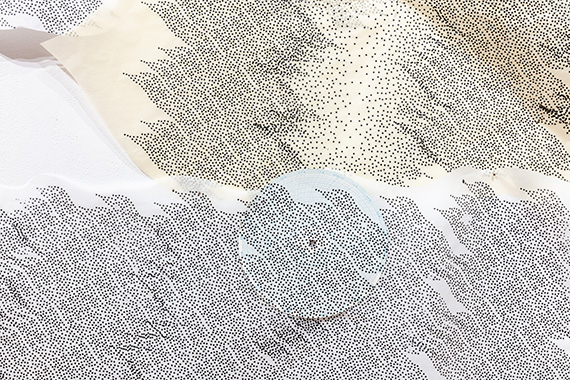
Free – Online. Register here.
Sponsored by the Illinois Science & Energy Innovation Foundation .
Just 415 carbon dioxide molecules per one million air molecules are driving global warming, impacting our health and safety. In Illinois, vehicular exhaust is the single-biggest source of carbon dioxide emissions. Learn about new research into the effects of a greater shift toward electric vehicles in the Chicago area and about local climate-friendly transportation initiatives. Gain a perspective on the outsized role of carbon dioxide in our changing climate by hearing about new artwork visualizing this invisible threat in our air.
Melody Geraci,
Deputy Executive Director, Active Transportation Alliance
Daniel Horton,
Lead Researcher, Climate Change Research Group, Northwestern University, and Third Coast Disrupted scientist
Andrew S. Yang,
Associate Professor, School of the Art Institute of Chicago, and Third Coast Disrupted artist
Filed under Art, Clean Energy, Climate Change, Transportation
Reposted from The Climate Reality Project.
| We’re kicking off 24 Hours of Reality: Countdown to the Future [today] at 4 PM ET, and we’re so excited! Presentations will take place around the globe in 85 countries as part of a worldwide conversation on how the climate crisis, COVID-19, and racial injustice shape our planet and this historic moment. We need you to join the conversation. RSVP today to join a public presentation*. You’ll learn about the science of climate change and the solutions in our hands now. And you’ll leave knowing not just what the climate crisis means for you, but how to talk about what’s happening with your friends and family. For everyone who attends and confirms their participation, Climate Reality and One Tree Planted will plant a tree to help reduce greenhouse gases and fight rising temperatures. |
| Even as we’re all continuing to do our part to fight for racial justice and stop the spread of this virus, there’s still plenty you can do to advocate for a better, healthier, more just and sustainable tomorrow.We hope you can join us to see where we stand and where we can go together.– Your friends at Climate Reality* To attend a Countdown to the Future presentation, you’ll first need to create a public account on Climate Reality’s Reality Hub. Once you’ve signed up, you’ll be able to log in at any time and request either a public or private presentation. On the main Countdown to the Future page, you can identify any public presentations already scheduled in your area. |
Filed under Uncategorized
Reposted from CarbonBrief, September 16, 2020.
The food system is a major contributor to climate change and, without significant shifts in global diets, it is unlikely the world will achieve its targets under the Paris Agreement.
It is also a highly complex global system, which makes the task of determining precisely how people’s diets need to change difficult.
Aside from general principles, such as cutting meat and dairy consumption, other issues that need addressing include differences in food production emissions around the world and avoiding food waste.
As part of our week-long series examining food and climate change, Carbon Brief has asked a range of scientists, policy experts and other stakeholders about the role dietary changes will play in limiting global warming.
Read more here.
Image Source: https://www.momscleanairforce.org/food-climate-change/
Filed under Uncategorized
Reposted from Third Coast Disrupted
CS Note: See various online events below exhibit information and general description. Past events are recorded and available for viewing.
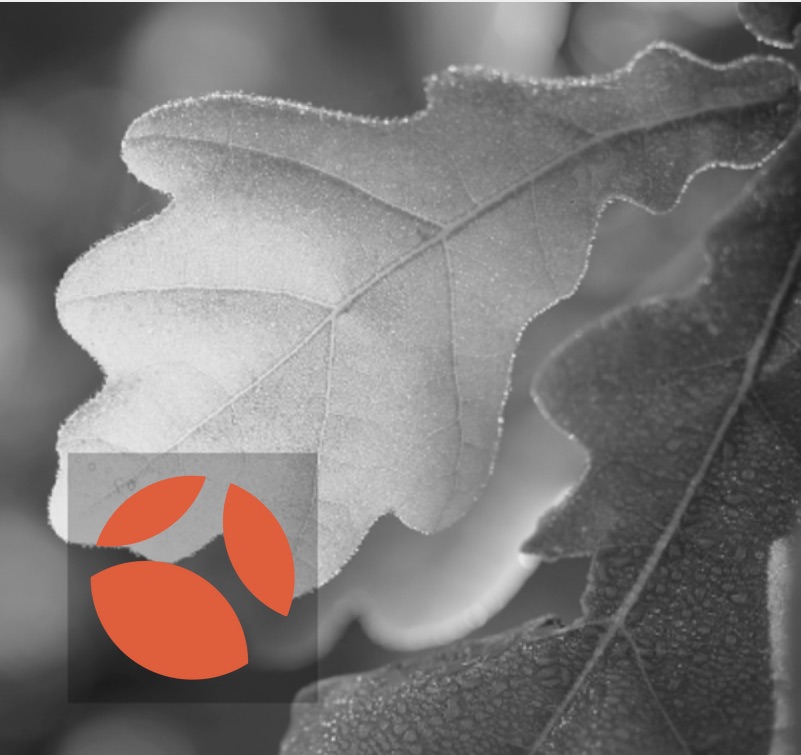
01/
September 8 – October 30, 2020
Glass Curtain Gallery – Columbia College Chicago
1104 S. Wabash Ave., 1st Floor, Chicago
Gallery Hours: Mon–Fri, 9 am – 5 pm
Gallery capacity is 10 visitors. Masks are required.
An exhibition of newly commissioned artworks culminating a yearlong conversation between artists and scientists centered on climate change impacts and solutions in the Chicago region.
Through science-inspired sculpture, painting, collage and more, the artworks examine local impacts — happening here and now — ranging from extreme heat to flooding to habitat loss, and more. They also shine light on local solutions underway, like “cool roofs,” nature-based approaches to slowing stormwater, and backyard habitat restoration. Some imagine future possibilities.
Third Coast Disrupted is based on the notion that art can connect and engage with people on an emotional level. It can pique curiosity, be unexpected, tactile, interactive, evocative, and memorable. It can slow people down, inspire them to reflect, move them to talk to each other — and spur them to act.
Meet the curatorial team.
Meet the artists and scientists.
This program is partially supported by grants from the Illinois Arts Council Agency and Illinois Science & Energy Innovation Foundation, with additional support from Keith Giles and Christine Skolnik; Openlands; The Nature Conservancy; Clare Butterfield and Edward Maldonado; Patrick and Laura Clark; Debra Shore; Greenleaf Advisors, LLC; The Fogelson Family Foundation; and the Keller Science Action Center, Field Museum.
It was created through a collaboration between Columbia College Chicago, DePaul University’s Institute for Nature and Culture, and Terracom.
Third Coast Disrupted is part of Chicago Water Week.
02/
Wed., September 16th, 7 – 8 pm CDT
Free – Online. Register here.
Climate change isn’t just a problem for polar bears or future generations any more — it’s affecting us here and now in the Chicago area. Temperatures are rising, rainfall patterns are shifting, and extreme precipitation and heat events are becoming more frequent.
The choices we make today will profoundly impact our future: the faster we cut our carbon emissions, the less adaptation will be needed, and the more suffering we can avert.
In such a politically charged environment, are we still able to act on climate? Join climate scientist Katharine Hayhoe as she untangles the complex science connecting our choices to future impacts and highlights actions underway today to combat this critical issue.
03/
Thurs., September 17, 8 – 9 am CDT
Free – Online. Register here.
Sponsored by Openlands.
If we want action on climate change, we need to talk about it. We need the issue to be in the public eye. But how? The topic can be overwhelming and contentious. What strategies work? What role does data play? What is the range of engagement tools? What does success look like? Join two climate scientists using different yet complementary approaches to engagement.
Climate Scientist, Texas Tech University
Climate Scientist, School of the Art Institute of Chicago
Project Director & Lead Curator, Third Coast Disrupted, and Founder, Terracom – Moderator
04/
Thurs., October 1, 6:30–7:30 pm CDT
Free – Online Register here.
More frequent intense rainstorms and flooding are among the devastating and costly impacts of the Chicago region’s changing climate. Like other effects, they hit communities of color hardest. Learn of the health concerns, from a personal and public health perspective, and hear about the local public-private partnerships and government efforts that provide relief and increase resilience.
Program Director, BRACE-Illinois,
and Third Coast Disrupted scientist
Third Coast Disrupted Artist
Vice President of Community Conservation, Openlands
Commissioner, Metropolitan Water Reclamation District of Greater Chicago
This program is part of Chicago Water Week.
05/
Thurs., October 8, 6:30–7:30 pm CDT
Free – Online. Register here.
Climate change gets migratory birds coming and going, literally. Millions of them travel through the Chicago area each spring and fall to and from their breeding grounds. Changes due to climate change here and elsewhere impact their breeding success and very survival. A host of local efforts that are improving conditions for birds in the face of climate change. Learn how you can help and have fun in the process.
Director of Community Engagement,
The Nature Conservancy in Illinois
Artist/Professor/Author,
Field Museum and School of the Art Institute of Chicago
Senior Conservation Ecologist,
Keller Science Action Center, Field Museum
06/
Thurs., October 22, 6:30–7:30 pm CDT
Free – Online. Register here.
Sponsored by the Illinois Science & Energy
Just 415 carbon dioxide molecules per one million air molecules are driving global warming, impacting our health and safety. In Illinois, vehicular exhaust is the single-biggest source of carbon dioxide emissions. Learn about new research into the effects of a greater shift toward electric vehicles in the Chicago area and about local climate-friendly transportation initiatives. Gain a perspective on the outsized role of carbon dioxide in our changing climate by hearing about new artwork visualizing this invisible threat in our air.
Deputy Executive Director, Active Transportation Alliance
Lead Researcher, Climate Change Research Group, Northwestern University,
and Third Coast Disrupted scientist
Associate Professor, School of the Art Institute of Chicago, and Third Coast Disrupted artist
Filed under Art, Chicago, Climate Change, science

Continue Reading here.
Learn more about at the long history of oil-industry disinformation at Drilled:
“Drilled is one of the few narrative podcasts about climate change. In 2018 when journalist Amy Westervelt was covering multiple climate lawsuits, she had the idea to put the story of climate change, and climate denial, into a true-crime framework. Season 1 (November 2018) focused on the climate research conducted by oil companies and when and how they shifted from studying the problem to denying it. Season 2 (April 2019) followed a community of crab fishermen as they became the first industry to sue Big Oil. Season 3 (January 2020) chronicles the 100-year history of fossil fuel P.R. campaigns and ties them to the propaganda we still see today. At least four more seasons are planned for 2020 and 2021. What began as a limited-run 8-part series has become the most-listened to podcast on climate change and, as of January 21, 2020, a multi-platform climate accountability reporting project that keeps industry honest on climate via investigative reporting across web, newsletters, and podcasts. Listen and subscribe wherever you get your podcasts!”
Filed under Climate Change, Environment, oil industry, science
By Timothy Grieve-Carlson, excerpt reposted from Paracultures.
[ . . . ] Ecology and evolutionary biology have a long history of admitting the deep weirdness in the world of their study. J. B. S. Haldane, the British-Indian scientist and science popularizer, summarized this tendency nicely in his 1927 essay “Possible Worlds,” in which he writes: “Now, my own suspicion is that the universe is not only queerer than we suppose, but queerer than we can suppose.” It’s an often misattributed quote (I first read it attributed to Einstein), misattributed so often, I think, for its deep impact. H.P. Lovecraft repeatedly tried to express such a thought in tentacles and wings, but Haldane spells it out much more clearly: this world is so weird that just thinking about it blows a hole through the mind that would know its weirdness. [ . . . ]

Read the complete post here. Go now.
Filed under Uncategorized
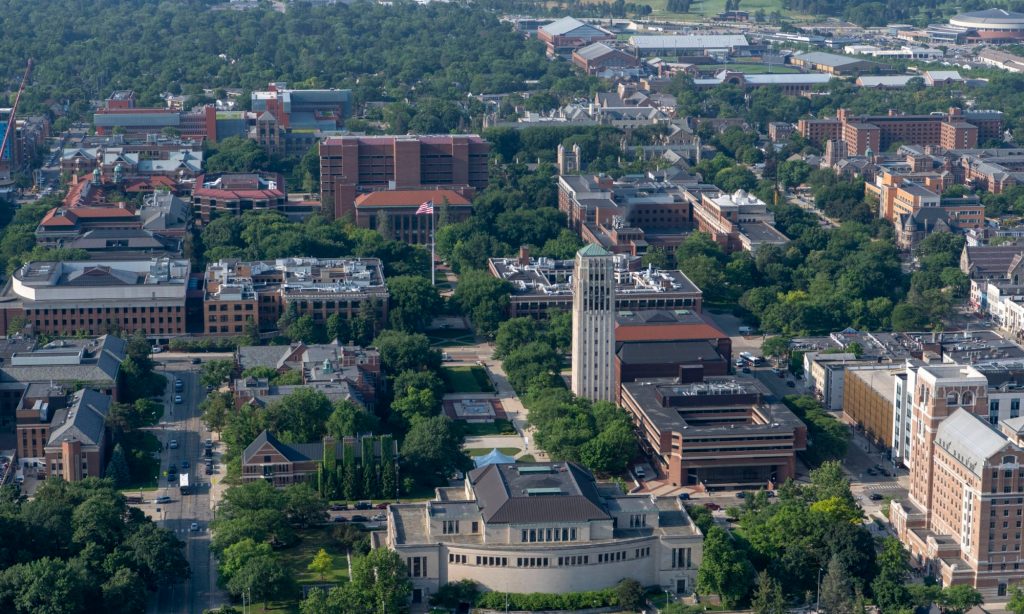
Welcome to the 34th Annual Meeting of the Society for Literature, Science, and the Arts, hosted by the Penny W. Stamps School of Art & Design at the University of Michigan, Ann Arbor.
The SLSA 2020 theme will be “Energy,” and papers/panels on all SLSA-related topics are welcome.
Conference Chair: Irina Aristarkhova
Exhibition Co-Curators: Srimoyee Mitra and Amanda McDonald Crowley
Keynote: Lisa Nakamura
Keynote: Raqs Media Collective (Co-founders of The Sarai Programme at the Center for the Study of Developing Societies)
Partners: Digital Studies Institute, Comparative Literature, English Language and Literature, and Center for South Asian Studies
Call for Papers and Submission Guidelines: https://easychair.org/cfp/slsa-2020
Submission Link: https://easychair.org/conferences/?conf=slsa20200
Submission Deadline: June 1, 2020
While submissions are strongly encouraged by June 1, 2020, we realize that the disruptions caused by COVID-19 may make this deadline challenging for many. As such, we will continue to consider submissions on a rolling basis until August 1, or until the conference schedule is fully populated. Our review process will provide participants with notification within a month of submission.
In light of COVID-19 disruptions, the 2020 SLSA conference will provide a “blended experience” style conference and member poster exhibition, with opportunities for both on-site and virtual participation. So, if you’d like to be part of SLSA2020 and cannot make it to Ann Arbor for various reasons, we will work to accommodate you to present virtually and be part of our community with your blended presence.
Go to SLSA Conference site here.
Image credit: University of Michigan, 7/14/18, 2018 Campus Aerial photos during summer: Central Campus, Burton Tower, North Quad, Rackham, Ingalls Mall, Diag, Hatcher, UGLY, State Street, Alumni Center, Washtenaw Ave.
Filed under Uncategorized
by Christine Skolnik
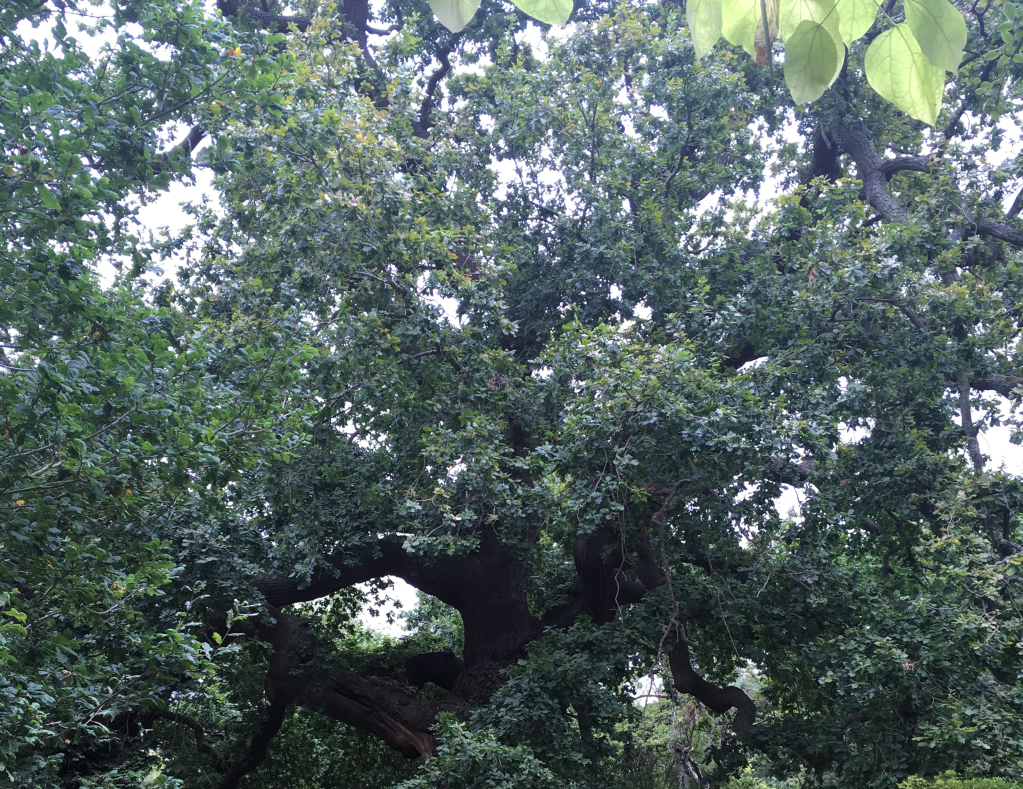
SLSA 2020 Abstract Draft:
Patricia Clough’s Autoaffection and The User Unconscious draw a figure of the brain measuring itself as an “originary technicity,” via which the unconscious is energetically open to Modern media technology and contemporary social media. Applying this notion of “originary technicity” to life and ecology, pairing technology and ecology in a manner that is more or less than figurative, I observe that plants, measuring themselves (as another “originary technicity”) engage in electrochemical processes that constitute an openness to ecological environments.
Pushing the trope of the rhizome back to the idea of a Jamesian field of experience and the metatrope of a Bergsonian instinctual aura, invoking an “energetic” union (in the set theory sense) of Deleuze, James, and Bergson, I wonder to what extent Modern and Capitalist Sorcery create and exploit the illusion of individual sovereignty. Hypnotized to believe that we amass property when purchasing Anne Taylor, Nike, and Starbucks, we fail to see that we actually sell ourselves into the cult/brands, relinquishing not only “capital” capital and vital energy but also the individuality and freedoms we defend in principle.
The counter-spell is not, I assert, a return to premodern social structures and values. I say this for two reasons: 1) The historical and contemporary reality of slavery, human trafficking, indentured servitude, child labor, woman as currency, “embarrassed etc.” 2) The arguments of Stengers, Latour, and (dare I say) Culianu, that we have never been Modern in the ways we have come to believe. At the same time, I don’t want to suggest a new order. I not only hesitate but invoke a pause for self-reflection. Ending with a union of Clough and Butler (in Giving an Account of Oneself), I ask how can a recognition of our unconscious openness to social/economic/technological environments, which is also an energetic openness, and opacity to ourselves as a consequence of this openness, help us to co-construct new, virtual schemes of social organization as well as new ethical sensibilities?
Filed under Uncategorized
by Christine Skolnik
Last week Professor George Crabtree presented Deep Decarbonization, a talk about new and emerging energy technologies within the context of climate change. The talk was organized by 350 Chicago and hosted by the DePaul University Institute for Nature & Culture. George Crabtree is a Distinguished Professor of Physics at the University of Illinois at Chicago and Director of the Joint Center for Energy Storage Research at Argonne National Laboratory. The talk included a brief review of some vitally important points related to climate change, a discussion of various current technology issues, as well as research and development challenges for the future. The talk is available on the 350 Chicago website here.
I was particularly interested in Dr. Crabtree’s discussion of business and industrial challenges. While most people, including knowledgeable activists, tend to focus on issues related to consumer uses of energy, Crabtree explained the real research and development challenges lay in business and industrial sectors. [ . . . ]
An EPA inventory of U.S. greenhouse gas emissions between 1990 and 2017 described emissions by sector. Each major sector emitted over a billion metric tons of “carbon dioxide equivalents” every year. Transportation was responsible for 29% of emissions; electricity generation responsible for 28%; and industry was responsible for 22% of GHG emissions. (The remaining sectors were agriculture, commercial, and residential.)
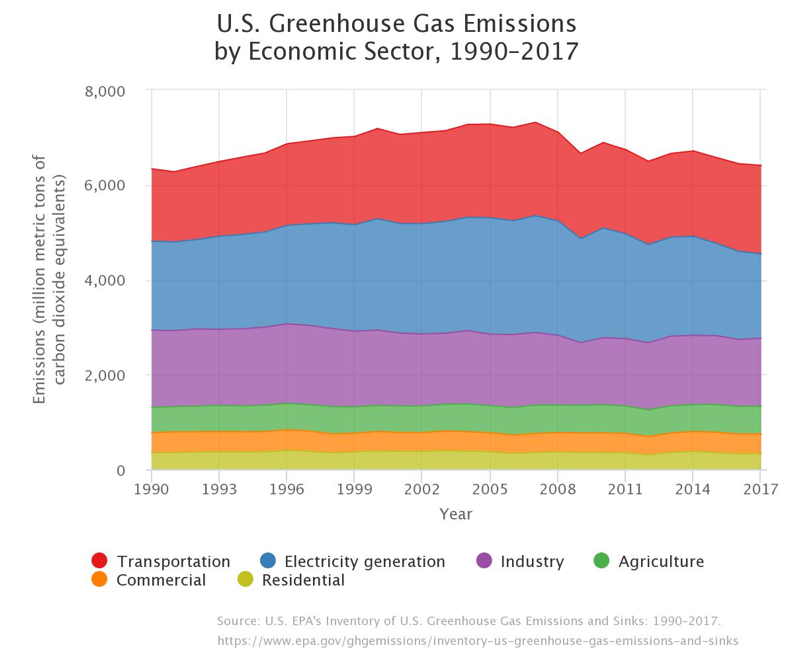
https://cfpub.epa.gov/ghgdata/inventoryexplorer/#allsectors/allgas/econsect/all
Unfortunately, the energy needs of commercial transportation and industrial manufacturing cannot be addressed by the same solutions we have developed for private transportation and residential energy consumption. Amazon will introduce 100,000 electric vans for local deliveries between 2021 and 2024, but long-haul trucks are not yet electric due to current limitations in range and charging times. Long haul trucks have to travel great distances, obviously, and such large batteries would take a great deal of time to charge. Hydrogen fuel cells are a potential alternative to current battery technology for heavy, long-range trucks. Hydrogen batteries are quite safe and create no GHG emissions. However, it is still quite expensive to produce hydrogen as a fuel.
Another transportation-related problem is commercial flights. There are quite a few prototypes of small electric planes. However, these have not yet been scaled up for commercial use. Airbus is developing a large, hybrid plane with one electric engine (out of four), but this will not get us to 100% decarbonization by 2050.

https://www.airbus.com/newsroom/news/en/2018/07/the-future-is-electric.html
The major alternative energy challenge in commercial flight lays primarily in getting planes up to a cruising altitude. This seemed like a significant obstacle, but Dr. Crabtree observed the dramatic progress made by the airplane industry in the first half of the twentieth century.
Industrial manufacturing was the other primary topic of discussion. We know plastic is a problem before it enters and after it exists industrial processes, because it begins with fossil fuels and ends up in our oceans. However, I was surprised to learn there is currently no method for producing steel with alternative energy sources. Upon reflection this makes sense. We all know that steel is forged at extremely high temperatures (about 1000 degrees Celsius). What I did not know is that high temperatures like this can only be produced by combustion. Hydrogen is an alternative combustion fuel, but it is currently most efficiently produced from natural gas and coal gasification. As an expert in materials science, Dr. Crabtree emphasized the need for research and development into alternative manufacturing processes and materials. [ . . . ]
The bottom line is this. To remain below a 2° increase in global warming, we have to invest a great deal of research and development into replacing “the last 50%” of dirty energy. Crabtree said we have to brainpower, but insufficient funding. He ended his talk by advocating for a carbon tax as a logical way of reducing carbon emissions and funding research. [ . . .]
See full article including an important note about recently announced breakthroughs in industrial energy technology at the 350 Chicago website here.
Filed under Uncategorized